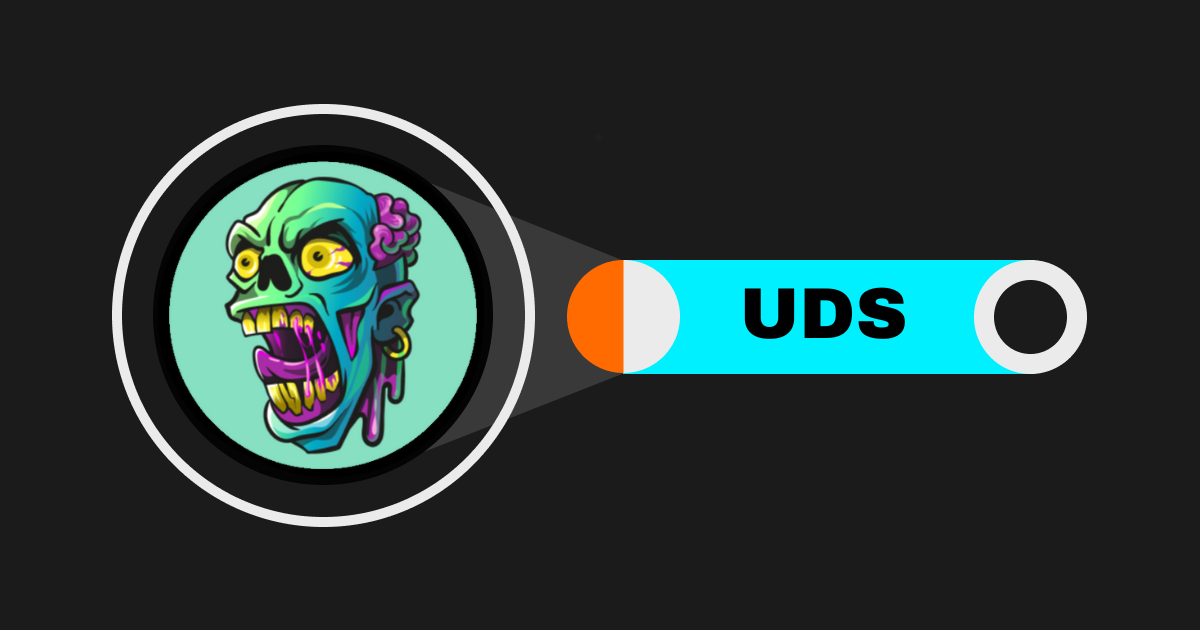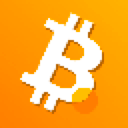Bitget: Top 4 in global daily trading volume!
Please also display BTC in AR61.60%
New listings on Bitget : Pi Network
BTC/USDT$85265.07 (+3.58%)Fear at Greed Index34(Fear)
Altcoin season index:0(Bitcoin season)
Coins listed in Pre-MarketPAWS,WCTTotal spot Bitcoin ETF netflow -$60.6M (1D); +$218.9M (7D).Welcome gift package para sa mga bagong user na nagkakahalaga ng 6200 USDT.Claim now
Trade anumang oras, kahit saan gamit ang Bitget app. I-download ngayon
Bitget: Top 4 in global daily trading volume!
Please also display BTC in AR61.60%
New listings on Bitget : Pi Network
BTC/USDT$85265.07 (+3.58%)Fear at Greed Index34(Fear)
Altcoin season index:0(Bitcoin season)
Coins listed in Pre-MarketPAWS,WCTTotal spot Bitcoin ETF netflow -$60.6M (1D); +$218.9M (7D).Welcome gift package para sa mga bagong user na nagkakahalaga ng 6200 USDT.Claim now
Trade anumang oras, kahit saan gamit ang Bitget app. I-download ngayon
Bitget: Top 4 in global daily trading volume!
Please also display BTC in AR61.60%
New listings on Bitget : Pi Network
BTC/USDT$85265.07 (+3.58%)Fear at Greed Index34(Fear)
Altcoin season index:0(Bitcoin season)
Coins listed in Pre-MarketPAWS,WCTTotal spot Bitcoin ETF netflow -$60.6M (1D); +$218.9M (7D).Welcome gift package para sa mga bagong user na nagkakahalaga ng 6200 USDT.Claim now
Trade anumang oras, kahit saan gamit ang Bitget app. I-download ngayon

May kaugnayan sa coin
Price calculator
Kasaysayan ng presyo
Paghula ng presyo
Teknikal na pagsusuri
Gabay sa pagbili ng coin
kategorya ng Crypto
Profit calculator

Victoria VR presyoVR
Listed
Quote pera:
PHP
₱0.2501+11.17%1D
Price chart
TradingView
Last updated as of 2025-04-01 22:35:42(UTC+0)
Market cap:₱1,587,538,523.74
Ganap na diluted market cap:₱1,587,538,523.74
Volume (24h):₱876,816,791.4
24h volume / market cap:55.23%
24h high:₱0.2556
24h low:₱0.2262
All-time high:₱40.76
All-time low:₱0.2095
Umiikot na Supply:6,346,851,000 VR
Total supply:
16,800,000,000VR
Rate ng sirkulasyon:37.00%
Max supply:
--VR
Price in BTC:0.{7}5125 BTC
Price in ETH:0.{5}2281 ETH
Price at BTC market cap:
₱15,261.13
Price at ETH market cap:
₱2,084.99
Mga kontrata:
0x7d51...e6e8cdd(Ethereum)
Higit pa
Ano ang nararamdaman mo tungkol sa Victoria VR ngayon?
Tandaan: Ang impormasyong ito ay para sa sanggunian lamang.
Presyo ng Victoria VR ngayon
Ang live na presyo ng Victoria VR ay ₱0.2501 bawat (VR / PHP) ngayon na may kasalukuyang market cap na ₱1.59B PHP. Ang 24 na oras na dami ng trading ay ₱876.82M PHP. Ang presyong VR hanggang PHP ay ina-update sa real time. Ang Victoria VR ay 11.17% sa nakalipas na 24 na oras. Mayroon itong umiikot na supply ng 6,346,851,000 .
Ano ang pinakamataas na presyo ng VR?
Ang VR ay may all-time high (ATH) na ₱40.76, na naitala noong 2021-12-02.
Ano ang pinakamababang presyo ng VR?
Ang VR ay may all-time low (ATL) na ₱0.2095, na naitala noong 2025-03-11.
Bitcoin price prediction
Ano ang magiging presyo ng VR sa 2026?
Batay sa makasaysayang modelo ng hula sa pagganap ng presyo ni VR, ang presyo ng VR ay inaasahang aabot sa ₱0.2483 sa 2026.
Ano ang magiging presyo ng VR sa 2031?
Sa 2031, ang presyo ng VR ay inaasahang tataas ng -1.00%. Sa pagtatapos ng 2031, ang presyo ng VR ay inaasahang aabot sa ₱0.3612, na may pinagsama-samang ROI na +43.11%.
Victoria VR price history (PHP)
The price of Victoria VR is -85.71% over the last year. The highest price of VR in PHP in the last year was ₱2.08 and the lowest price of VR in PHP in the last year was ₱0.2095.
TimePrice change (%) Lowest price
Lowest price Highest price
Highest price 
 Lowest price
Lowest price Highest price
Highest price 
24h+11.17%₱0.2262₱0.2556
7d-7.18%₱0.2219₱0.3162
30d-56.53%₱0.2095₱0.5835
90d-65.96%₱0.2165₱1.47
1y-85.71%₱0.2095₱2.08
All-time+48.07%₱0.2095(2025-03-11, 22 araw ang nakalipas )₱40.76(2021-12-02, 3 taon na ang nakalipas )
Victoria VR impormasyon sa merkado
Victoria VR's market cap history
Victoria VR market
Victoria VR holdings
Victoria VR holdings distribution matrix
Victoria VR holdings by concentration
Whales
Investors
Retail
Victoria VR addresses by time held
Holders
Cruisers
Traders
Live coinInfo.name (12) price chart

Victoria VR na mga rating
Mga average na rating mula sa komunidad
4.4
Ang nilalamang ito ay para sa mga layuning pang-impormasyon lamang.
VR sa lokal na pera
1 VR To MXN$0.091 VR To GTQQ0.031 VR To CLP$4.141 VR To UGXSh15.971 VR To HNLL0.111 VR To ZARR0.081 VR To TNDد.ت0.011 VR To IQDع.د5.721 VR To TWDNT$0.151 VR To RSDдин.0.471 VR To DOP$0.271 VR To MYRRM0.021 VR To GEL₾0.011 VR To UYU$0.181 VR To MADد.م.0.041 VR To AZN₼0.011 VR To OMRر.ع.01 VR To SEKkr0.041 VR To KESSh0.561 VR To UAH₴0.18
- 1
- 2
- 3
- 4
- 5
Last updated as of 2025-04-01 22:35:42(UTC+0)
Paano Bumili ng Victoria VR(VR)

Lumikha ng Iyong Libreng Bitget Account
Mag-sign up sa Bitget gamit ang iyong email address/mobile phone number at gumawa ng malakas na password para ma-secure ang iyong account.

Beripikahin ang iyong account
I-verify ang iyong pagkakakilanlan sa pamamagitan ng paglalagay ng iyong personal na impormasyon at pag-upload ng wastong photo ID.

Convert Victoria VR to VR
Gumamit ng iba't ibang mga pagpipilian sa pagbabayad upang bumili ng Victoria VR sa Bitget. Ipapakita namin sa iyo kung paano.
Matuto paSumali sa VR copy trading sa pamamagitan ng pagsunod sa mga elite na traders.
Pagkatapos mag-sign up sa Bitget at matagumpay na bumili ng mga token ng USDT o VR, maaari ka ring magsimula ng copy trading sa pamamagitan ng pagsunod sa mga elite na traders.
Victoria VR balita

Undeads Games (UDS): Crafting Tales Of Survival, Apocalypse, At Digital Fortunes
Bitget Academy•2024-05-06 10:02
Buy more
Ang mga tao ay nagtatanong din tungkol sa presyo ng Victoria VR.
Ano ang kasalukuyang presyo ng Victoria VR?
The live price of Victoria VR is ₱0.25 per (VR/PHP) with a current market cap of ₱1,587,538,523.74 PHP. Victoria VR's value undergoes frequent fluctuations due to the continuous 24/7 activity in the crypto market. Victoria VR's current price in real-time and its historical data is available on Bitget.
Ano ang 24 na oras na dami ng trading ng Victoria VR?
Sa nakalipas na 24 na oras, ang dami ng trading ng Victoria VR ay ₱876.82M.
Ano ang all-time high ng Victoria VR?
Ang all-time high ng Victoria VR ay ₱40.76. Ang pinakamataas na presyong ito sa lahat ng oras ay ang pinakamataas na presyo para sa Victoria VR mula noong inilunsad ito.
Maaari ba akong bumili ng Victoria VR sa Bitget?
Oo, ang Victoria VR ay kasalukuyang magagamit sa sentralisadong palitan ng Bitget. Para sa mas detalyadong mga tagubilin, tingnan ang aming kapaki-pakinabang na gabay na Paano bumili ng victoria-vr .
Maaari ba akong makakuha ng matatag na kita mula sa investing sa Victoria VR?
Siyempre, nagbibigay ang Bitget ng estratehikong platform ng trading, na may mga matatalinong bot sa pangangalakal upang i-automate ang iyong mga pangangalakal at kumita ng kita.
Saan ako makakabili ng Victoria VR na may pinakamababang bayad?
Ikinalulugod naming ipahayag na ang estratehikong platform ng trading ay magagamit na ngayon sa Bitget exchange. Nag-ooffer ang Bitget ng nangunguna sa industriya ng mga trading fee at depth upang matiyak ang kumikitang pamumuhunan para sa mga trader.
Saan ako makakabili ng Victoria VR (VR)?
Video section — quick verification, quick trading

How to complete identity verification on Bitget and protect yourself from fraud
1. Log in to your Bitget account.
2. If you're new to Bitget, watch our tutorial on how to create an account.
3. Hover over your profile icon, click on “Unverified”, and hit “Verify”.
4. Choose your issuing country or region and ID type, and follow the instructions.
5. Select “Mobile Verification” or “PC” based on your preference.
6. Enter your details, submit a copy of your ID, and take a selfie.
7. Submit your application, and voila, you've completed identity verification!
Ang mga investment sa Cryptocurrency, kabilang ang pagbili ng Victoria VR online sa pamamagitan ng Bitget, ay napapailalim sa market risk. Nagbibigay ang Bitget ng madali at convenient paraan para makabili ka ng Victoria VR, at sinusubukan namin ang aming makakaya upang ganap na ipaalam sa aming mga user ang tungkol sa bawat cryptocurrency na i-eooffer namin sa exchange. Gayunpaman, hindi kami mananagot para sa mga resulta na maaaring lumabas mula sa iyong pagbili ng Victoria VR. Ang page na ito at anumang impormasyong kasama ay hindi isang pag-endorso ng anumang partikular na cryptocurrency.
Bitget Insights

AshuBajwaB60
11h
# __The Impact of Virtual Reality on Architecture and Real Estate__
Virtual reality (VR) is transforming the architecture and real estate industries, providing a new and innovative way to design, build, and sell properties. By utilizing VR technology, architects, designers, and real estate agents can create immersive and interactive experiences, enabling clients to fully visualize and explore spaces before they are built. In this article, we'll explore the impact of VR on architecture and real estate, highlighting the benefits, challenges, and future directions of this emerging technology.
# Benefits of Virtual Reality in Architecture and Real Estate
The benefits of VR in architecture and real estate are numerous, including:
1. *Improved Visualization*: VR enables clients to fully visualize and explore spaces, reducing the risk of miscommunication and improving design accuracy.
2. *Enhanced Collaboration*: VR facilitates collaboration between architects, designers, and clients, enabling real-time feedback and design iteration.
3. *Increased Efficiency*: VR streamlines the design and construction process, reducing the need for physical prototypes and minimizing errors.
4. *Cost Savings*: VR can reduce costs associated with physical prototypes, travel, and site visits.
# Challenges Facing Virtual Reality Adoption in Architecture and Real Estate
Despite the benefits of VR in architecture and real estate, there are several challenges facing adoption, including:
1. *High Upfront Costs*: The cost of VR equipment and software can be prohibitively expensive for small firms and individuals.
2. *Limited Content Creation*: Creating high-quality VR content requires specialized skills and expertise, limiting the availability of VR experiences.
3. *User Experience*: VR experiences can be disorienting and uncomfortable for some users, particularly those with motion sickness or other sensitivities.
4. *Integration with Existing Workflows*: VR technology must be integrated with existing workflows and software, requiring significant investment in training and implementation.
# Future Directions for Virtual Reality in Architecture and Real Estate
The future of VR in architecture and real estate holds much promise, with potential developments in:
1. *Cloud-Based VR Platforms*: Cloud-based VR platforms can enable seamless collaboration and content sharing, reducing the need for expensive hardware and software.
2. *Artificial Intelligence and Machine Learning*: AI and ML can enhance VR experiences, enabling real-time design iteration and optimization.
3. *Mixed Reality and Augmented Reality*: Mixed reality (MR) and augmented reality (AR) can further blur the lines between physical and digital environments, enabling new and innovative applications in architecture and real estate.
4. *Virtual Property Tours*: Virtual property tours can become increasingly common, enabling clients to explore properties remotely and reducing the need for physical site visits.
# Conclusion
Virtual reality is transforming the architecture and real estate industries, providing a new and innovative way to design, build, and sell properties. While challenges remain, the benefits of VR are clear, and the industry is expected to continue to grow and evolve in the coming years.
# Recommendations
1. *Invest in VR Equipment and Software*: Invest in VR equipment and software to enable the creation of high-quality VR experiences.
2. *Develop VR Content Creation Skills*: Develop VR content creation skills to enable the creation of high-quality VR experiences.
3. *Integrate VR with Existing Workflows*: Integrate VR technology with existing workflows and software to enable seamless collaboration and content sharing.
4. *Promote VR Adoption*: Promote VR adoption among architects, designers, and real estate agents to enable the widespread adoption of this emerging technology.
5. *Support Research and Development*: Support research and development in VR technology, focusing on cloud-based platforms, AI, and MR/AR applications.
AR+0.31%
CLOUD+0.45%
BGUSER-Y60QWY9Z
13h
Navigating the Shifting Sands: Understanding $IMT Market Demand
The $IMT (International Mobile Telecommunications) market is a dynamic and ever-evolving landscape, driven by relentless technological advancements and the insatiable global appetite for connectivity. Understanding the intricate forces shaping $IMT demand is crucial for stakeholders across the telecommunications ecosystem, from network operators and equipment manufacturers to application developers and consumers.
The Driving Forces:
Several key factors are fueling the continued growth and transformation of $IMT market demand:
* Explosive Data Consumption: The proliferation of bandwidth-intensive applications like video streaming, online gaming, and augmented/virtual reality (AR/VR) is driving an exponential increase in data consumption. This necessitates robust $IMT networks capable of handling the surging traffic.
* The 5G Revolution and Beyond: The rollout of 5G networks, with its promise of ultra-low latency, high bandwidth, and massive connectivity, is fundamentally reshaping the $IMT landscape. As 5G matures and 6G research accelerates, the demand for advanced $IMT technologies will only intensify.
* Internet of Things (IoT) Expansion: The rapid expansion of IoT devices and applications, spanning smart homes, industrial automation, and connected vehicles, is creating a massive demand for reliable and ubiquitous $IMT connectivity.
* Emerging Markets Growth: Developing economies are experiencing rapid growth in mobile penetration and data usage, creating significant opportunities for $IMT market expansion. These markets often represent the most significant areas of future growth in $IMT.
* Digital Transformation: Businesses across all sectors are undergoing digital transformations, relying on $IMT networks to support remote work, cloud computing, and other digital services. This trend is further amplified by global events that accelerate the adoption of digital tools.
* Mobile Video Consumption: The increase in mobile video consumption, especially short form content, is a significant driver of data demand. This trend causes $IMT networks to be under more strain than ever before.
Challenges and Considerations:
While the $IMT market holds immense potential, it also faces several challenges:
* Spectrum Availability: Securing sufficient spectrum is critical for deploying and expanding $IMT networks. The increasing demand for spectrum is driving up auction prices and creating competition among operators.
* Infrastructure Investment: Building and maintaining robust $IMT infrastructure, particularly 5G and beyond, requires significant capital investment.
* Affordability and Accessibility: Ensuring affordable access to $IMT services for all segments of the population is essential for bridging the digital divide.
* Security and Privacy: As $IMT networks become more pervasive, ensuring the security and privacy of user data is paramount.
* Sustainability: The environmental impact of $IMT networks, including energy consumption and electronic waste, is a growing concern.
The Future of $IMT:
The future of the $IMT market is bright, driven by relentless innovation and the increasing reliance on mobile connectivity. As technologies like 5G, 6G, and artificial intelligence converge, $IMT networks will play an even more critical role in shaping the digital economy. Stakeholders must remain agile and adaptable to navigate the shifting sands of $IMT market demand and capitalize on the opportunities that lie ahead. The $IMT market will continue to grow and transform the way people live and work.
AR+0.31%
VIRTUAL+4.78%

AshuBajwaB60
1d
# __The Impact of Virtual Reality on Education: Enhancing the Learning Experience__
Virtual reality (VR) is transforming the education sector, offering an immersive and interactive learning experience that enhances student engagement, retention, and understanding. In this article, we'll explore the impact of VR on education, highlighting its benefits, applications, challenges, and future directions.
# Benefits of Virtual Reality in Education
VR offers numerous benefits in education, including:
1. *Enhanced Engagement*: VR experiences are interactive and immersive, increasing student engagement and motivation.
2. *Improved Retention*: VR helps students retain information better, as they are more likely to remember experiences than traditional teaching methods.
3. *Increased Understanding*: VR enables students to visualize complex concepts, improving their understanding and comprehension.
4. *Personalized Learning*: VR can be tailored to individual learning styles, abilities, and needs, providing a personalized learning experience.
# Applications of Virtual Reality in Education
VR has various applications in education, including:
1. *Science, Technology, Engineering, and Mathematics (STEM)*: VR can enhance STEM education by providing interactive, 3D models and simulations.
2. *Language Learning*: VR can immerse language learners in virtual environments, enhancing their listening, speaking, reading, and writing skills.
3. *History and Cultural Studies*: VR can transport students to historical events, cultural sites, and museums, providing a unique perspective on the past.
4. *Medical and Healthcare Education*: VR can simulate real-world medical scenarios, allowing students to practice and develop their clinical skills.
# Challenges Facing Virtual Reality in Education
While VR offers numerous benefits in education, there are also challenges to overcome, including:
1. *Cost and Accessibility*: VR equipment and software can be expensive, limiting accessibility for some schools and students.
2. *Technical Issues*: VR experiences can be affected by technical issues, such as lag, glitches, and hardware malfunctions.
3. *Content Creation*: Creating high-quality, educational VR content can be time-consuming and require significant resources.
4. *Teacher Training*: Teachers may require training to effectively integrate VR into their teaching practices.
# Future Directions for Virtual Reality in Education
The future of VR in education holds much promise, with potential developments in:
1. *Advancements in Hardware and Software*: Improvements in VR hardware and software will enhance the overall VR experience, making it more accessible and affordable.
2. *Increased Content Availability*: The development of more educational VR content will provide teachers with a wider range of resources to support their teaching practices.
3. *Integration with Other Technologies*: VR will be integrated with other technologies, such as artificial intelligence, augmented reality, and the Internet of Things, to create more immersive and interactive learning experiences.
4. *Personalized and Adaptive Learning*: VR will be used to create personalized and adaptive learning experiences, tailored to individual students' needs, abilities, and learning styles.
# Conclusion
Virtual reality is transforming the education sector, offering an immersive and interactive learning experience that enhances student engagement, retention, and understanding. While there are challenges to overcome, the benefits of VR in education make it an exciting and promising field of study.
# Recommendations
1. *Invest in Virtual Reality Infrastructure*: Invest in VR equipment and software to support the integration of VR into educational institutions.
2. *Develop High-Quality Educational Content*: Develop high-quality, educational VR content that aligns with curriculum standards and supports teaching practices.
3. *Provide Teacher Training and Support*: Provide teachers with training and support to effectively integrate VR into their teaching practices.
4. *Conduct Research and Evaluation*: Conduct research and evaluation to assess the effectiveness of VR in education and identify areas for improvement.
5. *Foster Collaboration and Knowledge Sharing*: Foster collaboration and knowledge sharing among educators, researchers, and industry experts to advance the use of VR in education.
VIRTUAL+4.78%
VR+9.50%

AshuBajwaB60
2025/03/27 17:30
# __Revolutionizing Education: The Future of Virtual and Augmented Reality in the Classroom__
The education sector is on the cusp of a revolution, driven by the increasing adoption of virtual and augmented reality (VR/AR) technologies. VR/AR is transforming the way we learn, making education more immersive, interactive, and effective. In this article, we'll explore the future of VR/AR in education, highlighting its benefits, challenges, and potential applications.
# Benefits of Virtual and Augmented Reality in Education
VR/AR offers several benefits, including:
1. *Improved Engagement*: VR/AR increases student engagement, motivation, and participation, leading to better learning outcomes.
2. *Enhanced Retention*: VR/AR improves knowledge retention, as students are more likely to remember experiences that are interactive and immersive.
3. *Personalized Learning*: VR/AR enables personalized learning, tailoring educational content to individual students' needs, abilities, and learning styles.
4. *Increased Accessibility*: VR/AR increases accessibility, enabling students with disabilities or limitations to participate in educational experiences that may be difficult or impossible for them to access otherwise.
5. *Cost-Effective*: VR/AR is cost-effective, reducing the need for physical equipment, travel, and other resources.
# Challenges of Virtual and Augmented Reality in Education
VR/AR also faces several challenges, including:
1. *Technical Issues*: VR/AR requires reliable technology, including high-performance computers, specialized hardware, and stable internet connections.
2. *Content Creation*: VR/AR requires high-quality, educational content, which can be time-consuming and expensive to create.
3. *Teacher Training*: VR/AR requires teacher training, enabling educators to effectively integrate VR/AR into their curriculum and teaching practices.
4. *Equity and Access*: VR/AR raises concerns about equity and access, as not all students have equal access to VR/AR technology and resources.
5. *Assessment and Evaluation*: VR/AR requires new approaches to assessment and evaluation, measuring student learning in immersive environments.
# Applications of Virtual and Augmented Reality in Education
VR/AR is being applied in various ways, including:
1. *K-12 Education*: VR/AR is being used in K-12 education, enhancing student engagement, motivation, and participation in subjects such as math, science, and language arts.
2. *Higher Education*: VR/AR is being used in higher education, enabling students to explore complex concepts, simulate real-world scenarios, and develop practical skills.
3. *Vocational Training*: VR/AR is being used in vocational training, providing students with hands-on experience and training in fields such as healthcare, manufacturing, and construction.
4. *Special Education*: VR/AR is being used in special education, providing students with disabilities or limitations with personalized learning experiences and accommodations.
5. *Corporate Training*: VR/AR is being used in corporate training, enabling employees to develop new skills, practice complex scenarios, and improve their performance.
# Conclusion
The future of education is virtual and augmented reality, offering a more immersive, interactive, and effective way of learning. While VR/AR faces several challenges, including technical issues, content creation, and teacher training, the benefits of VR/AR, including improved engagement, enhanced retention, and personalized learning, make it an attractive option for many educational institutions and organizations.
# Recommendations
1. *Invest in Virtual and Augmented Reality Infrastructure*: Invest in VR/AR infrastructure, including high-performance computers, specialized hardware, and stable internet connections.
2. *Develop High-Quality Educational Content*: Develop high-quality, educational VR/AR content, tailored to specific subjects, age groups, and learning objectives.
3. *Provide Teacher Training and Support*: Provide teacher training and support, enabling educators to effectively integrate VR/AR into their curriculum and teaching practices.
4. *Address Equity and Access Concerns*: Address equity and access concerns, ensuring that all students have equal access to VR/AR technology and resources.
5. *Develop New Approaches to Assessment and Evaluation*: Develop new approaches to assessment and evaluation, measuring student learning in immersive environments.
AR+0.31%
VIRTUAL+4.78%

AshuBajwaB60
2025/03/27 14:37
# __Revolutionizing Education: The Future of Virtual and Augmented Reality__
The education sector is on the cusp of a revolution, driven by the increasing adoption of virtual and augmented reality (VR/AR) technologies. VR/AR is transforming the way we learn, making education more immersive, interactive, and effective. In this article, we'll explore the future of VR/AR in education, highlighting its benefits, challenges, and potential applications.
# Benefits of Virtual and Augmented Reality in Education
VR/AR offers several benefits, including:
1. *Improved Engagement*: VR/AR increases student engagement, motivation, and participation, leading to better learning outcomes.
2. *Enhanced Retention*: VR/AR improves knowledge retention, as students are more likely to remember experiences that are interactive and immersive.
3. *Personalized Learning*: VR/AR enables personalized learning, tailoring educational content to individual students' needs, abilities, and learning styles.
4. *Increased Accessibility*: VR/AR increases accessibility, enabling students with disabilities or limitations to participate in educational experiences that may be difficult or impossible for them to access otherwise.
5. *Cost-Effective*: VR/AR is cost-effective, reducing the need for physical equipment, travel, and other resources.
# Challenges of Virtual and Augmented Reality in Education
VR/AR also faces several challenges, including:
1. *Technical Issues*: VR/AR requires reliable technology, including high-performance computers, specialized hardware, and stable internet connections.
2. *Content Creation*: VR/AR requires high-quality, educational content, which can be time-consuming and expensive to create.
3. *Teacher Training*: VR/AR requires teacher training, enabling educators to effectively integrate VR/AR into their curriculum and teaching practices.
4. *Equity and Access*: VR/AR raises concerns about equity and access, as not all students have equal access to VR/AR technology and resources.
5. *Assessment and Evaluation*: VR/AR requires new approaches to assessment and evaluation, as traditional methods may not be effective in measuring student learning in immersive environments.
# Applications of Virtual and Augmented Reality in Education
VR/AR is being applied in various ways, including:
1. *K-12 Education*: VR/AR is being used in K-12 education, enhancing student engagement, motivation, and participation in subjects such as math, science, and language arts.
2. *Higher Education*: VR/AR is being used in higher education, enabling students to explore complex concepts, simulate real-world scenarios, and develop practical skills.
3. *Vocational Training*: VR/AR is being used in vocational training, providing students with hands-on experience and training in fields such as healthcare, manufacturing, and construction.
4. *Special Education*: VR/AR is being used in special education, providing students with disabilities or limitations with personalized learning experiences and accommodations.
5. *Corporate Training*: VR/AR is being used in corporate training, enabling employees to develop new skills, practice complex scenarios, and improve their performance.
# Conclusion
The future of education is virtual and augmented reality, offering a more immersive, interactive, and effective way of learning. While VR/AR faces several challenges, including technical issues, content creation, and teacher training, the benefits of VR/AR, including improved engagement, enhanced retention, and personalized learning, make it an attractive option for many educational institutions and organizations.
# Recommendations
1. *Invest in Virtual and Augmented Reality Infrastructure*: Invest in VR/AR infrastructure, including high-performance computers, specialized hardware, and stable internet connections.
2. *Develop High-Quality Educational Content*: Develop high-quality, educational VR/AR content, tailored to specific subjects, age groups, and learning objectives.
3. *Provide Teacher Training and Support*: Provide teacher training and support, enabling educators to effectively integrate VR/AR into their curriculum and teaching practices.
4. *Address Equity and Access Concerns*: Address equity and access concerns, ensuring that all students have equal access to VR/AR technology and resources.
5. *Develop New Approaches to Assessment and Evaluation*: Develop new approaches to assessment and evaluation, measuring student learning in immersive environments and providing feedback that informs instruction.
AR+0.31%
VIRTUAL+4.78%
Mga kaugnay na asset
Mga sikat na cryptocurrencies
Isang seleksyon ng nangungunang 8 cryptocurrencies ayon sa market cap.
Kamakailang idinagdag
Ang pinakahuling idinagdag na cryptocurrency.
Maihahambing na market cap
Sa lahat ng asset ng Bitget, ang 8 na ito ang pinakamalapit sa Victoria VR sa market cap.



































Victoria VR Social Data
Sa nakalipas na 24 na oras, ang marka ng sentimento ng social media para sa Victoria VR ay 3, at ang trend ng presyo ng social media patungo sa Victoria VR ay Bullish. Ang overall na marka ng social media ng Victoria VR ay 0, na nagra-rank ng 602 sa lahat ng cryptocurrencies.
Ayon sa LunarCrush, sa nakalipas na 24 na oras, binanggit ang mga cryptocurrencies sa social media nang 1,058,120 (na) beses, na binanggit ang Victoria VR na may frequency ratio na 0%, na nagra-rank ng 454 sa lahat ng cryptocurrencies.
Sa nakalipas na 24 na oras, mayroong total 42 na natatanging user na tumatalakay sa Victoria VR, na may kabuuang Victoria VR na pagbanggit ng 22. Gayunpaman, kumpara sa nakaraang 24 na oras, ang bilang ng mga natatanging user bumaba ng 19%, at ang kabuuang bilang ng mga pagbanggit ay pagtaas ng 29%.
Sa Twitter, mayroong kabuuang 0 na tweet na nagbabanggit ng Victoria VR sa nakalipas na 24 na oras. Kabilang sa mga ito, ang 0% ay bullish sa Victoria VR, 0% ay bearish sa Victoria VR, at ang 100% ay neutral sa Victoria VR.
Sa Reddit, mayroong 1 na mga post na nagbabanggit ng Victoria VR sa nakalipas na 24 na oras. Kung ikukumpara sa nakaraang 24 na oras, ang bilang ng mga pagbanggit bumaba ng 0% . Bukod pa rito, mayroong 0 na komento na nagbabanggit ng Victoria VR. Kung ikukumpara sa nakaraang 24 na oras, ang bilang ng mga pagbanggit ay bumaba ng 0%.
Lahat ng panlipunang pangkalahatang-ideya
3